SEEK Advertised Salary Index - January
The SEEK Advertised Salary Index (ASI) measures the growth in advertised salaries for jobs posted on SEEK in Australia. This quarterly SEEK ASI report contains industry and state trends. There will be briefer monthly reports in March and April.

NATIONAL ADVERTISED SALARY TRENDS
- Advertised salaries rose by 0.2% in January, the slowest month-on-month (m/m) growth since December 2021.
- Year-on-year (y/y) advertised salary growth remains strong at 4.5%, but has slowed from the 4.8% recorded in mid-2023.
STATE & TERRITORY ADVERTISED SALARY TRENDS
- The less populous states led the nation, with advertised salaries rising 5.6% y/y in Tasmania.
- NSW (4.3%) and Victoria (4.4%) recorded below-average increases for the same period, reflecting ongoing sluggishness in labour demand in the less populous states.
INDUSTRY ADVERTISED SALARY TRENDS
- Community Services & Development grew the fastest y/y (8.9%), which largely reflects the Fair Work Commission’s decision to raise wages for aged care workers, which had a noticeable effect on SEEK’s data in July and August. Recently growth has been more modest.
- Information & Communication Technology (1.9%) continued to experience relatively weak growth in advertised salaries.
NATIONAL ADVERTISED SALARY TRENDS
Advertised salaries rose by 0.2% m/m, the slowest monthly growth rate since December 2021, when much of Australia was emerging from COVID restrictions. In the middle of 2023, advertised salary growth was rapid, at 0.5% m/m in July, August and September, but it has slowed markedly since then.
Figure 1: Month-on-month growth of SEEK Advertised Salary Index
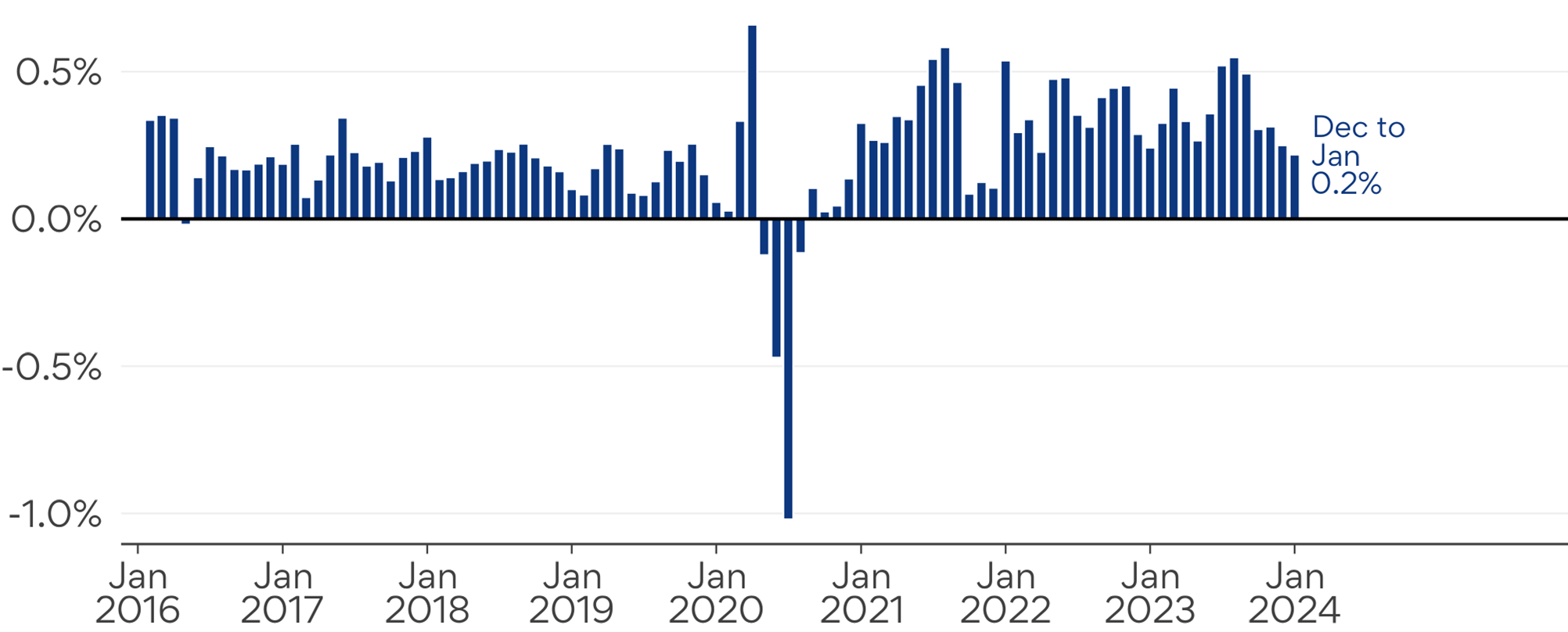
Note: seasonally adjusted. Source: SEEK.
Although the SEEK ASI has slowed m/m, annual growth remains solid at 4.5% in the year to January 2024. This has declined from 4.8% in the year to September, but remains robust.
Figure 2: Year-on-year growth of SEEK Advertised Salary Index
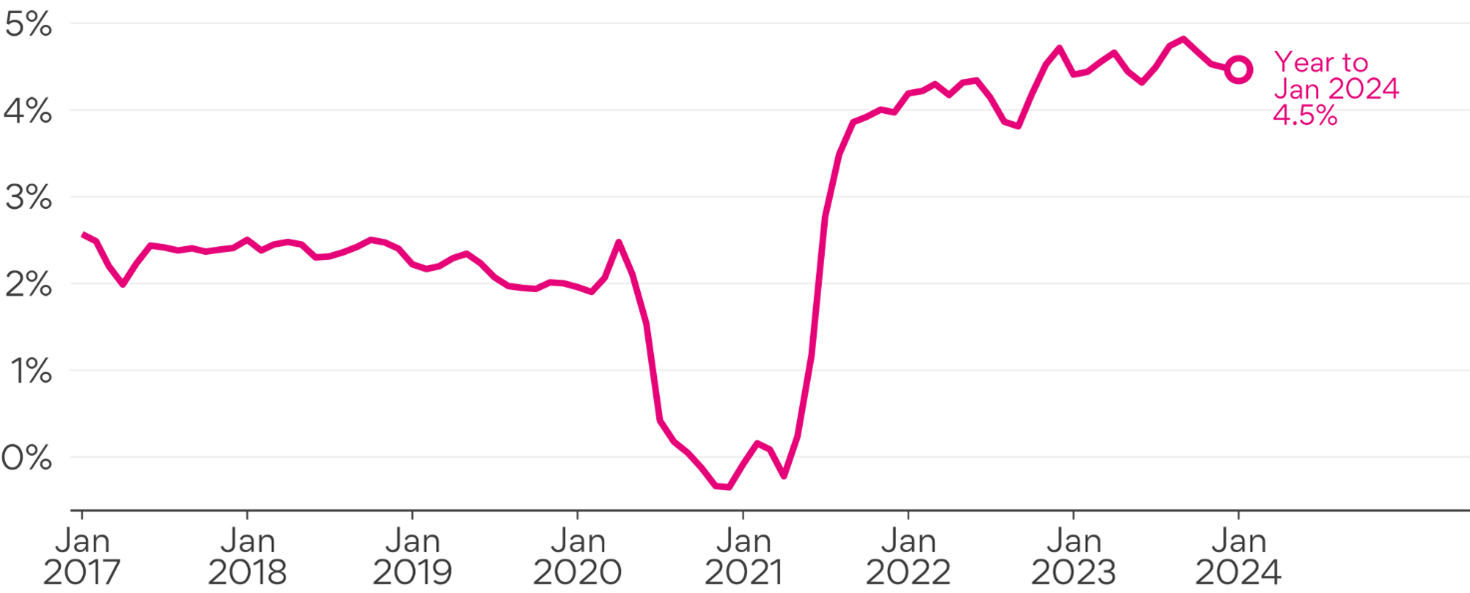
Note: seasonally adjusted. Source: SEEK.
STATE & TERRITORY ADVERTISED SALARY TRENDS
Advertised salaries rose fastest in the smaller states, with Tasmania leading the pack, rising 5.6% in the year to January. The largest states recorded solid but unexceptional increases, at 4.3% for NSW and 4.4% for Victoria, the below-average pace in these states reflecting the more modest job ad growth in those markets.
The Australian Capital Territory and Northern Territory each recorded relatively modest rises in advertised salaries (4.0% and 3.8% respectively). The Australian Capital Territory has lagged the states for much of the period since late 2021, responding to the tight labour market comparatively slower and less dramatically.
Despite being more generally volatile than the rest of the country, the Northern Territory recorded the slowest ASI in the year to January, with its growth rate over the past three months now close to or on par with Victoria, Tasmania and the Australian Capital Territory.
Table 1: SEEK Advertised Salary Index growth by state/territory
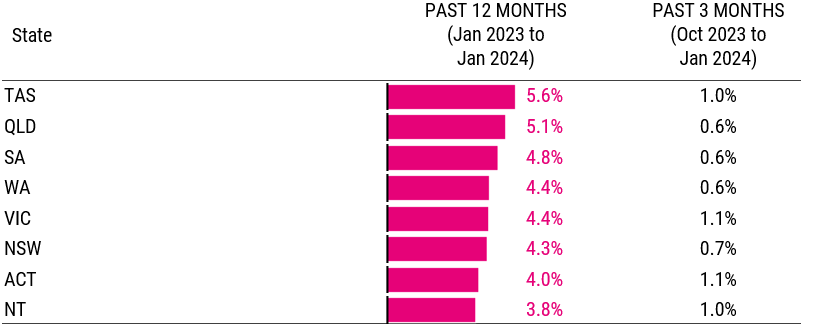
Note: seasonally adjusted. Source: SEEK.
Figure 3: Year-on-year growth of SEEK Advertised Salary Index by state/territory
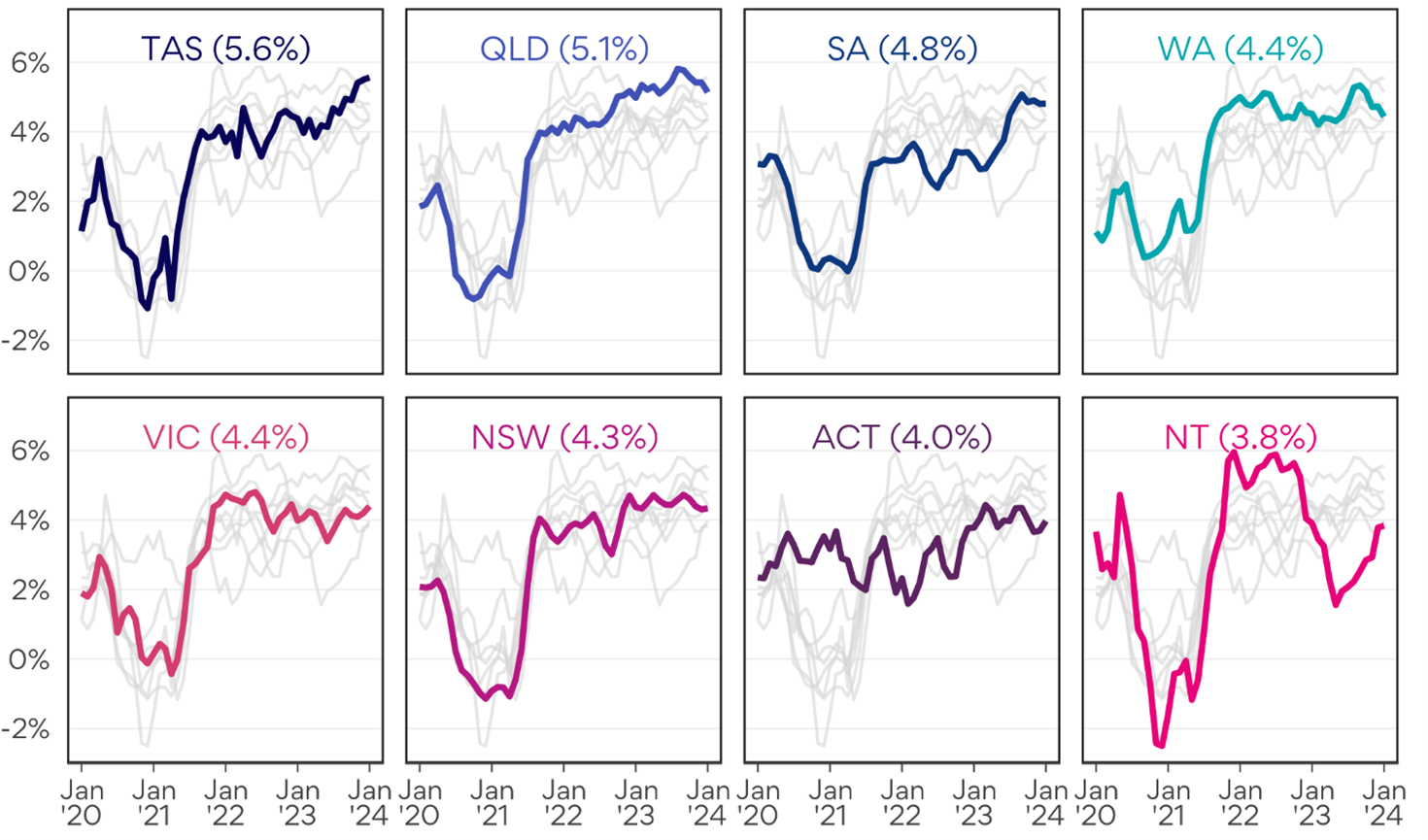
Note: seasonally adjusted. Source: SEEK.
INDUSTRY ADVERTISED SALARY TRENDS
In July last year, wage increases awarded by the Fair Work Commission as part of the Annual Wage Review and Aged Care Work Value Case took effect. This boosted wage growth in some industries, particularly Community Services & Development, which showed up as increased SEEK ASI growth in the middle of the year. Its impact is now in the rearview mirror, with salaries in Community Services & Development increasing at a slightly more normal 1.5% in the three months to January. The rapid rise in mid-2023 is still reflected in a very strong 8.9% over the year.
Education & Training had the second highest SEEK ASI increase y/y at 6.2%. This industry experienced relatively strong demand for labour in 2023, which is driving above-average salary growth.
At the other end of the scale, the Information & Communications Technology industry recorded the slowest growth of any major industry, at just 1.9% in the year to January. The three months to January were even slower, at just 0.3% over the quarter. This reflects the ongoing challenges in the technology sector, with relatively soft demand for labour after a booming market pre-2022.
After a period of sluggish wages growth in the public sector, the gaps between public and private have started to close. Government roles recorded a 3.7% rise in ASI y/y, below average, but catching up to other industries. Other industries with a heavy public sector component, such as Healthcare & Medical (5.0%), also recorded solid increases.
Table 2: SEEK Advertised Salary Index growth by industry
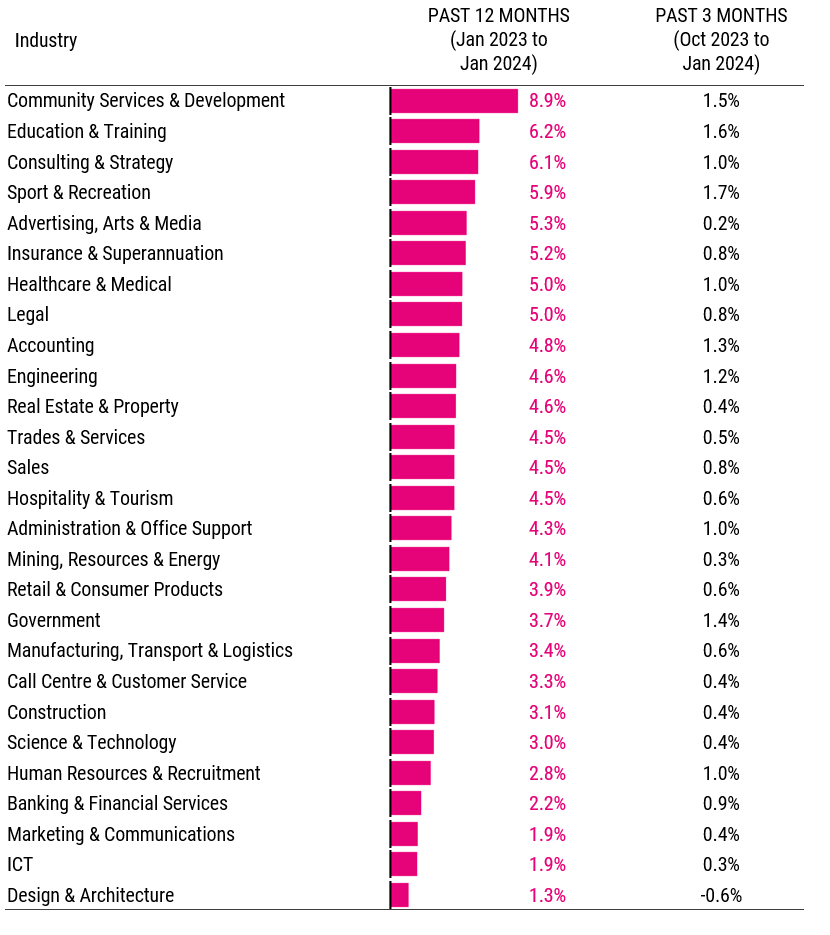
-ENDS-
About the SEEK ASI
The SEEK ASI measures the change in advertised salaries over time for jobs posted on SEEK in Australia, removing much of the effect of compositional change.
The SEEK ASI is a complement to existing data about the growth in wages and salaries in Australia, including the ABS’ WPI. The WPI is a measure of the pace of wages growth across the economy.
The SEEK ASI provides a timely and frequent read on the pulse of advertised salary growth in Australia for vacant roles.
More information about how the SEEK ASI is put together and the data files associated with this report can be found here.
Disclaimer
The Data should be viewed and regarded as standalone information and should not be aggregated with any other information whether such information has been previously provided by SEEK Limited, ("SEEK"). The Data is given in summary form and whilst care has been taken in its preparation, SEEK makes no representations whatsoever about its completeness or accuracy. SEEK expressly bears no responsibility or liability for any reliance placed by you on the Data, or from the use of the Data by you. If you have received this message in error, please notify the sender immediately.